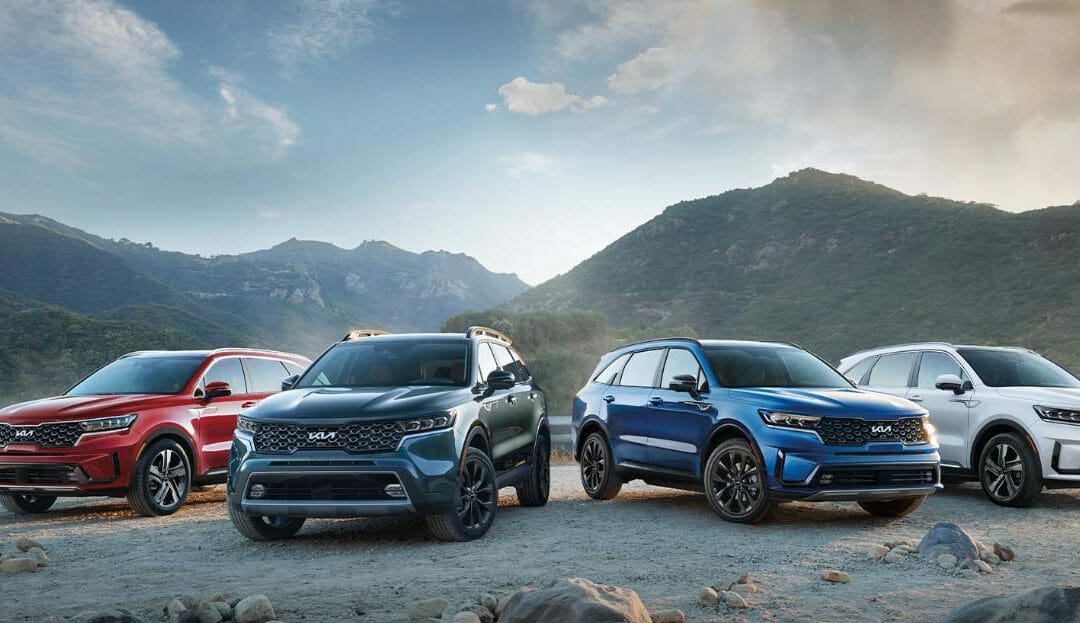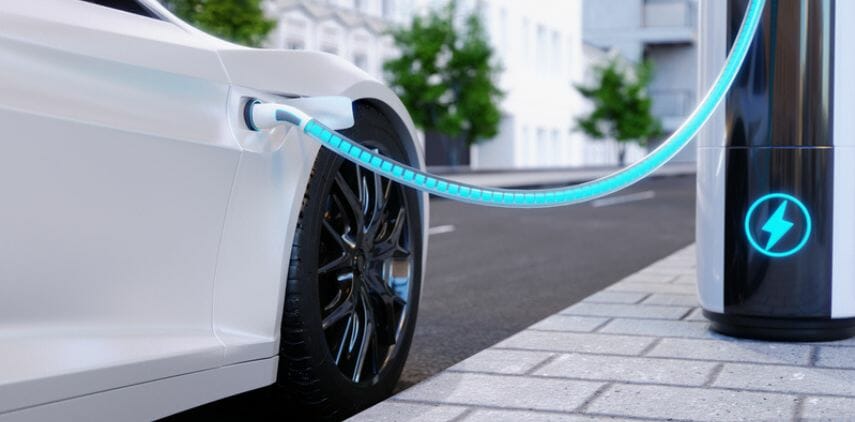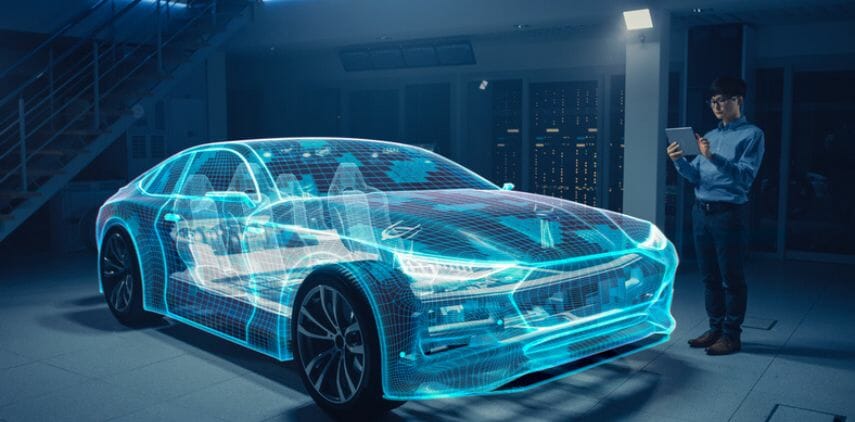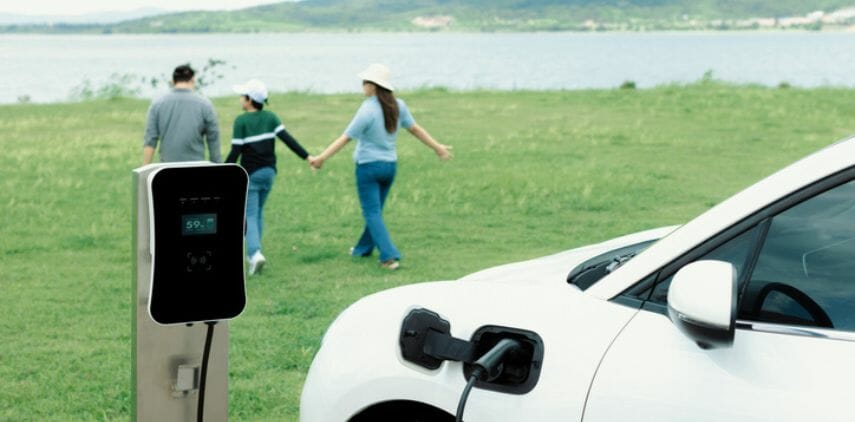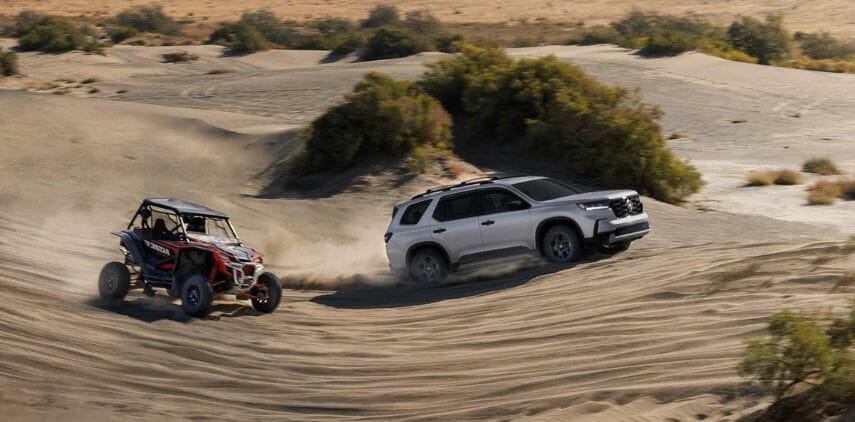Overview
Buying an SUV is a huge commitment as they are expensive, and like any other car, they too require proper maintenance and services at regular intervals. It is important to purchase an SUV that aligns with your priorities and fulfills your needs to avoid regretting the decision in the long run.
If you have been looking to purchase an SUV, you must have already come across the terms intermediate and standard SUVs. Both of the terms are used to describe different kinds of SUVs with varying sizes, costs, and features. Standard and Intermediate SUVs are also referred to as Full-Size and Mid-Size SUVs respectively, due to the difference in their size.
Table of Contents
What is the difference between a standard SUV and an intermediate SUV?
What’s considered an intermediate SUV?
Intermediate or mid-size SUVs are bigger than compact SUVs but smaller than standard SUVs. They offer a good balance between power, cost, and features. Most people prefer intermediate SUVs for their fuel efficiency and easier maneuverability.
Here are the top five intermediate SUVs in the market:
- Kia Telluride
- Hyundai Palisade
- Mazda CX-9
- Honda Pilot
- Chevrolet Traverse
Kia Telluride
The Kia Telluride is a handsome three-row intermediate SUV that has accumulated a whole lot of awards over the last few years. The interior is very luxurious compared to rivals. It can comfortably carry big families and their luggage. The infotainment system is one of the best in class. Many active safety features are available as standard.
The Telluride is powered by a 3.8L V6 engine that produces 291 hp. The V6 is not the most frugal engine, but fuel efficiency is still pretty good. It can tow up to 5000 lb, and with the optional AWD, it can tackle some off-road as well.
Hyundai Palisade
Hyundai Palisade is a premium SUV that offers a plethora of equipment as standard, including some advanced safety features such as rear cross-traffic alert and blind-spot avoidance. It is powered by a 3.8L V6 that produces 291 hp, and it is mated to an eight-speed automatic transmission.
It is a comfortable and practical SUV that has excellent safety scores and reliability ratings. The Palisade also offers a lot of value for the money. The cabin can get a bit noisy at highway speeds, but all the materials in the cabin feel premium and upmarket.
Mazda CX-9
The Mazda CX-9 is a competitively priced practical three-row SUV with surprisingly good driving dynamics. The materials used inside the cabin are all high quality, and the build quality is top-notch. You could easily mistake it for the interior of a much expensive car.
It is powered by a 2.5L turbocharged I4 engine producing 250 hp, and it is mated to a six-speed automatic transmission. The 10.3-inch infotainment is very responsive and offers a lot of functionality. The space is a little tight, especially at the 3rd row compared to rivals, but it is the family SUV for a driving enthusiast.
Honda Pilot
The Honda Pilot is a very practical SUV. It is built on the same platform as Honda’s best-selling minivan Odyssey. And as a result, the pilot ends up looking like a raised minivan, which might drive some customers away. But it also offers some of the practicality of a minivan, even though the 3rd row is not comfortable for long stints.
The 3.5L V6 produces 280 hp, and it is paired with a nine-speed automatic transmission. The engine produces plenty of power, and it feels sporty. The top-heavy design is certainly noticeable through corners, but the ride is comfortable.
Chevrolet Traverse
The Chevrolet Traverse is the perfect alternative if you do not want to buy a minivan. It is very comfortable, and the ride is very gentle due to the soft suspension setup. The 3.6L V6 engine produces 310 hp, and it is paired with a nine-speed automatic transmission.
The engine inside the traverse is very responsive, and it has plenty of power, especially at the lower end of the powerband. But it is still very fuel-efficient at the same time. The materials used for the interior may not be as high quality as the rivals, but the fit and finish are quite good, and the cabin is practical.
What’s better, intermediate or standard?
There is no right answer to this question. Whether you should get an intermediate SUV or a standard SUV will depend entirely on your preferences and specific use case. These are some of the most important factors which should help you make that decision.
Third-row seating
One of the most important factors should be whether you need comfortable 3rd-row seating. Most drivers buying SUVs would like to have the 3rd row so that they have the option if they ever end up needing one.
Auto manufacturers recognize this and offer 3rd-row seating both in the intermediate and standard SUVs. But the 3rd rows in intermediate SUVs will not be as roomy and comfortable as the ones in standard SUVs. So if you often transport more than five people, then standard SUVs will be a better option for you.
Driving conditions
Another factor to consider is where you are going to drive the car. If most of the time is going to be spent inside the city dealing with traffic, and tight parking spots, then intermediate SUVs will be a better option. If you plan to go off-road a lot, then the capabilities of huge standard SUVs will be beneficial for you.
Cargo and Towing
If you want an SUV to carry your family and maybe some groceries, then intermediate SUVs will be the right choice for you. But if you often find yourself having to carry large loads along with a car full of passengers, then you should opt for a standard SUV.
Also, if you want to tow heavy objects such as boats, standard SUVs will be perfect for you as many of them are built on ladder-on-frame chassis. These are the same underpinnings found in trucks, and combined with the big engines, they are immensely capable.
Fuel efficiency
Standard SUVs consume a lot of gas due to the large engines and the heavier curb weight. Intermediate SUVs are relatively much more fuel-efficient. So if fuel efficiency is a concern, you should go for intermediate SUVs.
What are examples of a standard SUV?
Standard SUVs are large SUVs with big and powerful engines that comfortably carry a lot of passengers and tow heavy objects. They are capable off-road as well. The downside is that they cost more, have lower fuel efficiency, and emit a lot more pollution into the atmosphere.
- GMC Yukon
- Chevrolet Tahoe
- Nissan Armada
- Ford Expedition
- Jeep Wagoneer
GMC Yukon
The GMC can easily haul a lot of passengers and cargo at the same time, and there are not that many rivals that do it better. The Yukon lineup is available with either a 5.3L or 6.2L V8 or a 3.0L turbocharged I6. You can choose from the various engine options provided. All of them are plenty powerful but not very fuel-efficient, which is to be expected.
The Yukon is very comfortable, and the suspension soaks up almost all road imperfections. All of the rows are spacious and the cabin feels airy. The connectivity is also pretty good, and there are some advanced safety features as well.
Chevrolet Tahoe
The Chevrolet Tahoe is an impressive SUV that offers a lot of features. It has a towing capacity of 8400lbs. It also offers multiple choices for the engine, so you can equip the best one that fits your needs.
The controls and switches inside the cabin may put some people off, and it is not the best-looking SUV either. The safety scores are good, and there are some advanced driver-assist features. The lower trims offer a lot of value for the money, even though the top trims might be a bit overpriced.
Nissan Armada
The Armada is one of the smoothest riding standard SUVs on this list. The ride is very comfortable, and the suspension does its job very well. The interior may seem a bit outdated, but it still feels premium nevertheless. The cabin is well insulated and the materials used are top-notch.
It is powered by a 5.6L V8 which produces 400 hp and 414 lb-ft of torque. The engine is a gas guzzler, and the fuel efficiency is not that great. But it can tow up to 8500 lbs. The Armada is well equipped, and the safety rating is pretty good.
Ford Expedition
The Expedition is a massive three-row SUV with a very spacious cabin. The powertrain may not be as refined as the previously mentioned rivals, but the 3.5L twin-turbo V6 is immensely powerful. It can do 0-60mph in 5.9s, which is commendable for such a heavy SUV, and it can also tow 9300lbs.
The fuel efficiency is mediocre, and the handling is a bit underwhelming. But it offers a lot of techs that make it desirable. The top trims are priced very high, similar to luxury SUVs from a segment above, but the lower trims put forward a better value proposition.
Jeep Wagoneer
Jeep recently resurrected the Wagoneer moniker from the past to name its latest three-row family SUV. The cabin is very spacious, and it gets plenty of advanced tech. Customers can include up to five screens including a screen dedicated to the front passenger.
It is powered by a 5.7L V8 producing 392 hp. It is rated for a maximum towing capacity of 10,000lbs. Jeep made sure that the Wagoneer has some decent off-road capability in its standard form, but it can be improved using the optional air suspension, which also improves the overall comfort. The starting price is a bit steep, but it can be well worth it.
Final thoughts
Intermediate SUVs may not have the power and space that comes with standard SUVs. They are still quite spacious and can comfortably carry a lot of people. On top of that, you get better fuel efficiency, and it is easier to drive as well.
If you want to carry a lot of people at the same time or a great amount of cargo, then standard SUVs are for you. They are also incredibly capable of off-roading as well as towing.
In case you are on a budget and the extra space does not appeal to you, we would highly recommend you buy an intermediate SUV as it is more of a jack of all trades as it should be able to handle small stints of towing and light off-roading just fine.
While the vehicle size depends on your need and budget, it’s safe to say that intermediate SUVs are more popular, because they are less expensive than large vehicles, offer considerably better fuel economy, and are easier to maneuver. But if you need heavy towing capacity and off-road ability, a standard SUV is the right choice.
[/dipl_faq_page_schema_item][dipl_faq_page_schema_item faq_question=”Which is better for towing: standard or intermediate SUV?” _builder_version=”4.12.1″ _module_preset=”default” question_heading_level=”h3″ global_colors_info=”{}”]
Standard SUVs are much better at towing as many standard SUVs borrow underpinnings from highly capable trucks. They also have bigger engines which also help to tow heavy objects.
[/dipl_faq_page_schema_item][dipl_faq_page_schema_item faq_question=”What is the main difference between standard and intermediate SUVs?” _builder_version=”4.12.1″ _module_preset=”default” question_heading_level=”h3″ global_colors_info=”{}”]
Standard SUVs are large SUVs with bigger engines. Intermediate SUVs are comparatively smaller and have smaller engines. Standard SUVs can comfortably carry a lot of passengers and can tow heavy objects as well.
[/dipl_faq_page_schema_item][/dipl_faq_page_schema]

